In the adjacent figure, mass of A, B and C are 1 kg , 3 kg and 2 kg, respectively. Find
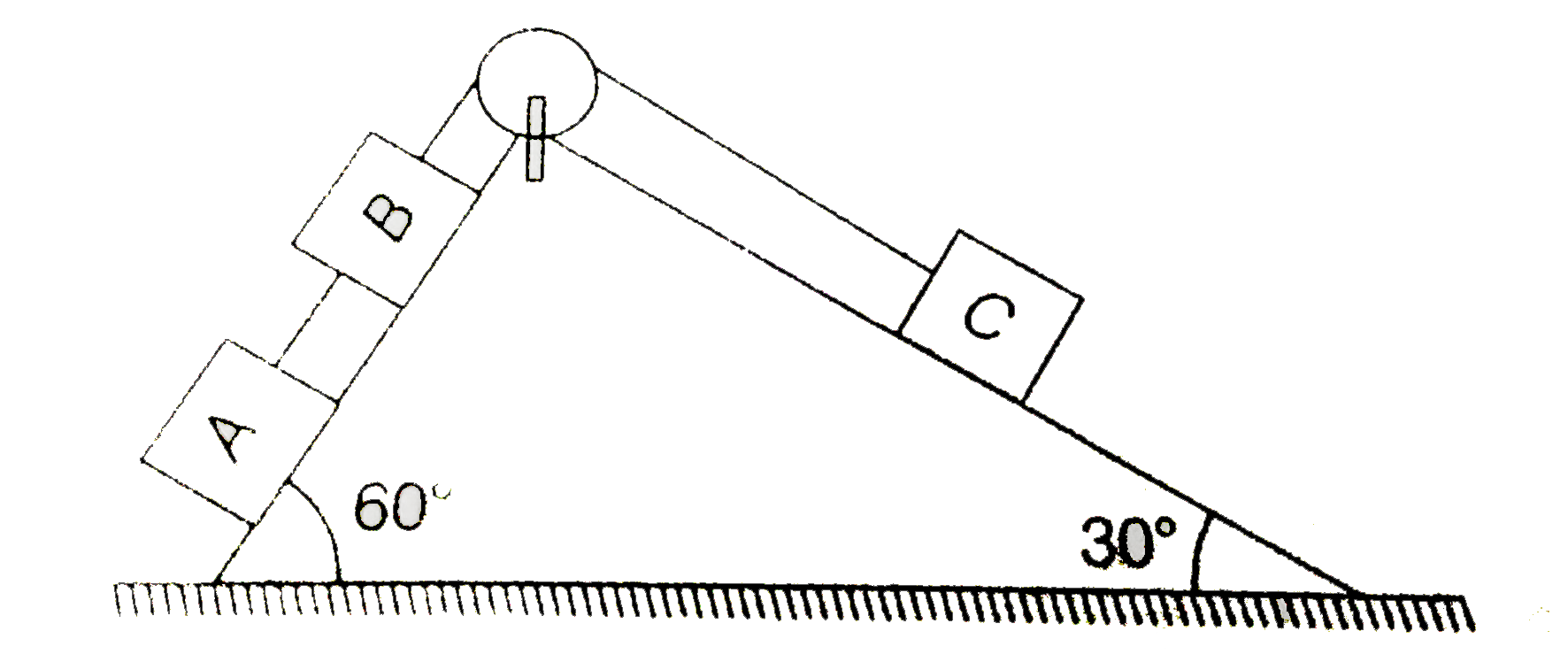
(a) the acceleration of the system, and
(b) tensions in the string .
Neglect friction. (g=10ms−2)
(a) mAgsin60∘−T1=mAa..........(1)
T1−T2+mBgsin60∘=mBa .............(2)
T2−mCgsin30∘=mCa.........(3)
∴ Acceleration of the system a=24.646=4.1m/s2
(b) For the tension T1 in the string between A and B, mAgsin60∘−T1=(mA)(a)
(b) For the tension T1 in the string between A and B, mAgsin60∘−T1=(mA)(a)
⇒T1=(1)(10×√32−4.1)=4.56N
For the tension T2 in the string between B and C
T2−mCgsin30∘=mCa
⇒T2=mC(a+gsin30∘)=2[4.1+10(12)]=18.2N
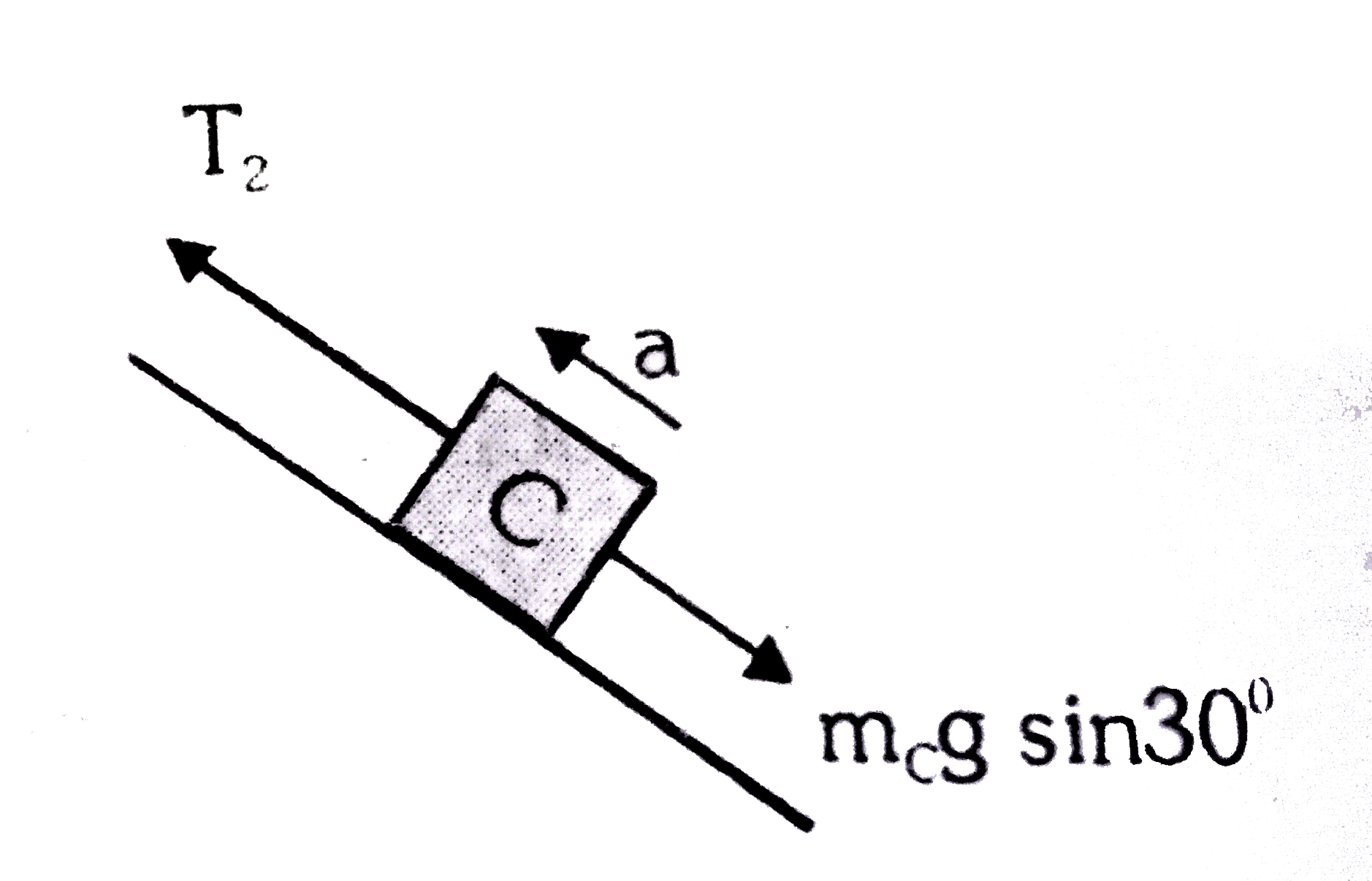
Topper's Solved these Questions
- BOOK - ALLENCHAPTER - NEWTONS LAWS OF MOTIONEXERCISE - SWOE44videos
NEWTONS LAWS OF MOTION
- BOOK - ALLENCHAPTER - NEWTONS LAWS OF MOTIONEXERCISE - EXERCISE-I52videos
NEWTONS LAWS OF MOTION
- BOOK - ALLENCHAPTER - NEWTON'S LAWS OF MOTION & FRICTIONEXERCISE - EXERCISE (JA)4videos
NEWTON'S LAWS OF MOTION & FRICTION
- BOOK - ALLENCHAPTER - RACEEXERCISE - Basic Maths (Wave Motion & Dopplers Effect) (Stationary waves & doppler effect, beats)24videos
RACE
Similar Questions
In the adjacent figure, masses of A,B and C are 1kg,3kg and 2kg respectively. Find
(a) the acceleration of the system and
(b) tension in the strings.
Neglect friction.(g=10m/s2)
 View Solution
View SolutionIf coeffiecient of friction between the block of mass 2kg and table is 0.4 then out acceleration of the system and tension in the string. (g=10m/s2)
 View Solution
View SolutionIn the above example, if two blocks have masses 1kg and 2kg respectively then find their acceleration and tension in different string.
View SolutionA block A of mass 6kg is applied on a frictionless table. A thread tied to it passes over a frictionless pulley and carries a body B of mass 4kg at the other end. Find the acceleration of the system and tension in the thread (given g=10ms−2)
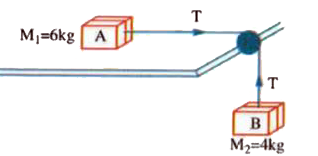 View Solution
View SolutionIn the arrangement shown in Figure, mA=2kg and mB=1kg. String is light and inextensible. Find the acceleration of centre of mass of both the blocks. Neglect friction everywhere.
 View Solution
View SolutionIn the arrangement shown in Figure, mA=2kg and mB=1kg. String is light and inextensible. Find the acceleration of centre of mass of both the blocks. Neglect friction everywhere.
 View Solution
View SolutionTwo block of mass 4 kg and 2 kg are attached by an inextensible light string as shown in figure. Both the blocks are pulled vertically upwards by a force F=120N
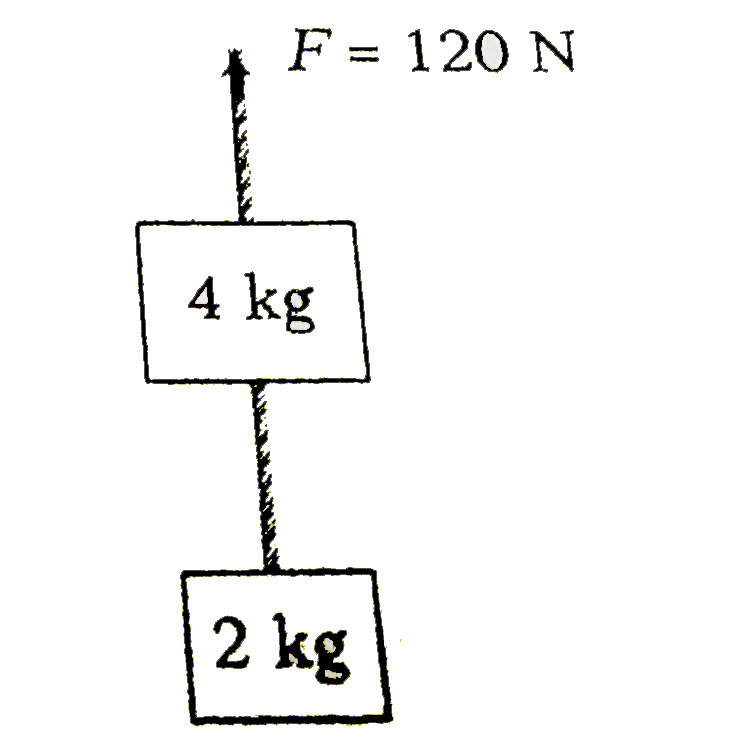
Find
(a) the acceleration of the blocks,
(b) tension in the string. (Take g=10ms−2)View SolutionTwo block of mass 4 kg and 2 kg are attached by an inextensible light string as shown in figure. Both the blocks are pulled vertically upwards by a force F=120N
Find
(a) the acceleration of the blocks
(b) tension in the string. (Take g=10ms−2)
 View Solution
View SolutionConsider the situation shown in figure .Both the pulleys and the string and light and all the surfaces are smooth.
(a) Find the acceleration of 1kg block.
(b) Find the tension in the string. (g=10m/s2).
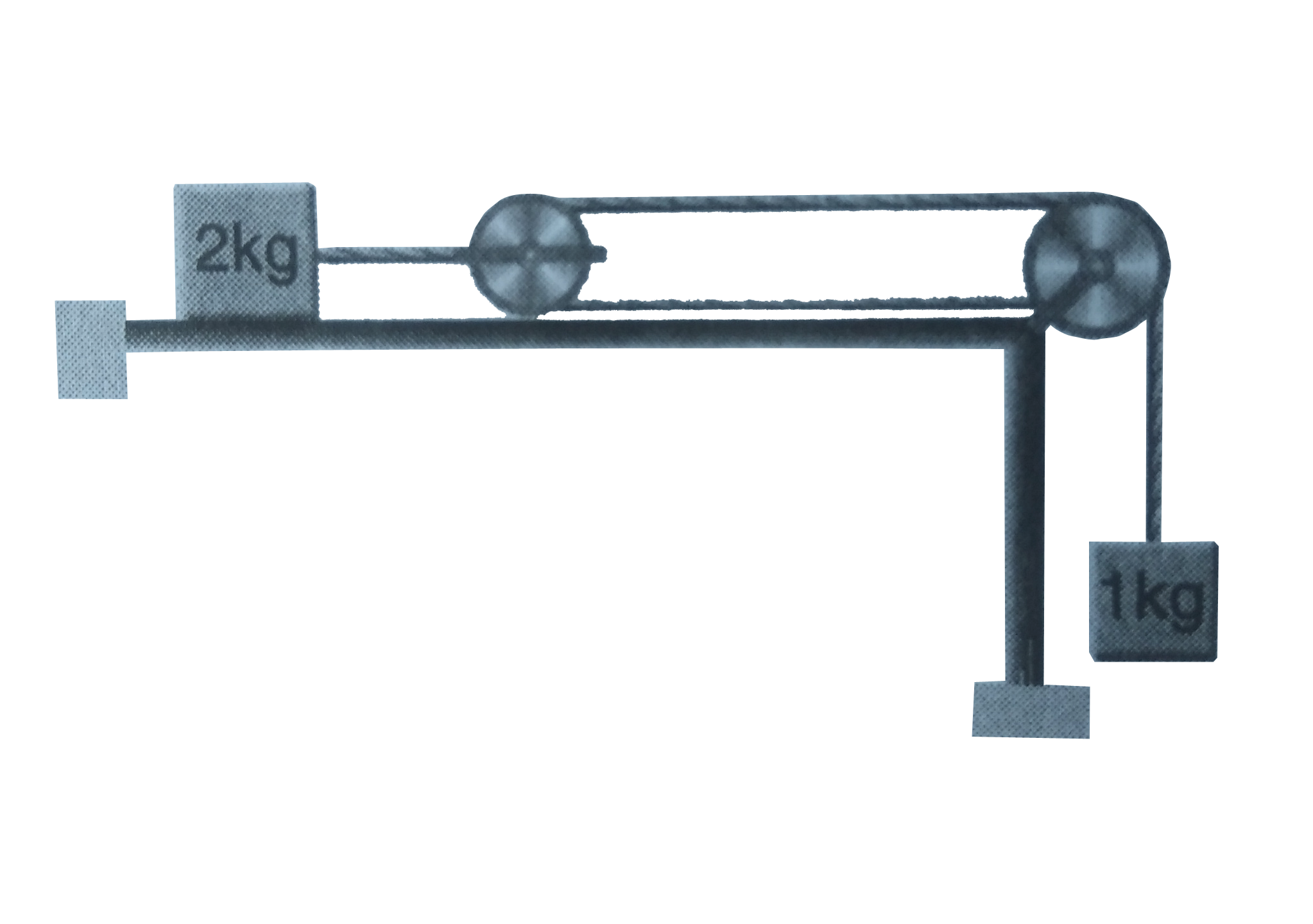 View Solution
View SolutionIn the arrangement shown in figure pulleys are mass of block A,b and C is m1=5kgm2=4kg and m3=2.5kg respectively .Co-efficient acceleration of friction for both the plane is μ=0.50 Calculate acceleration of which block when system is released from rest
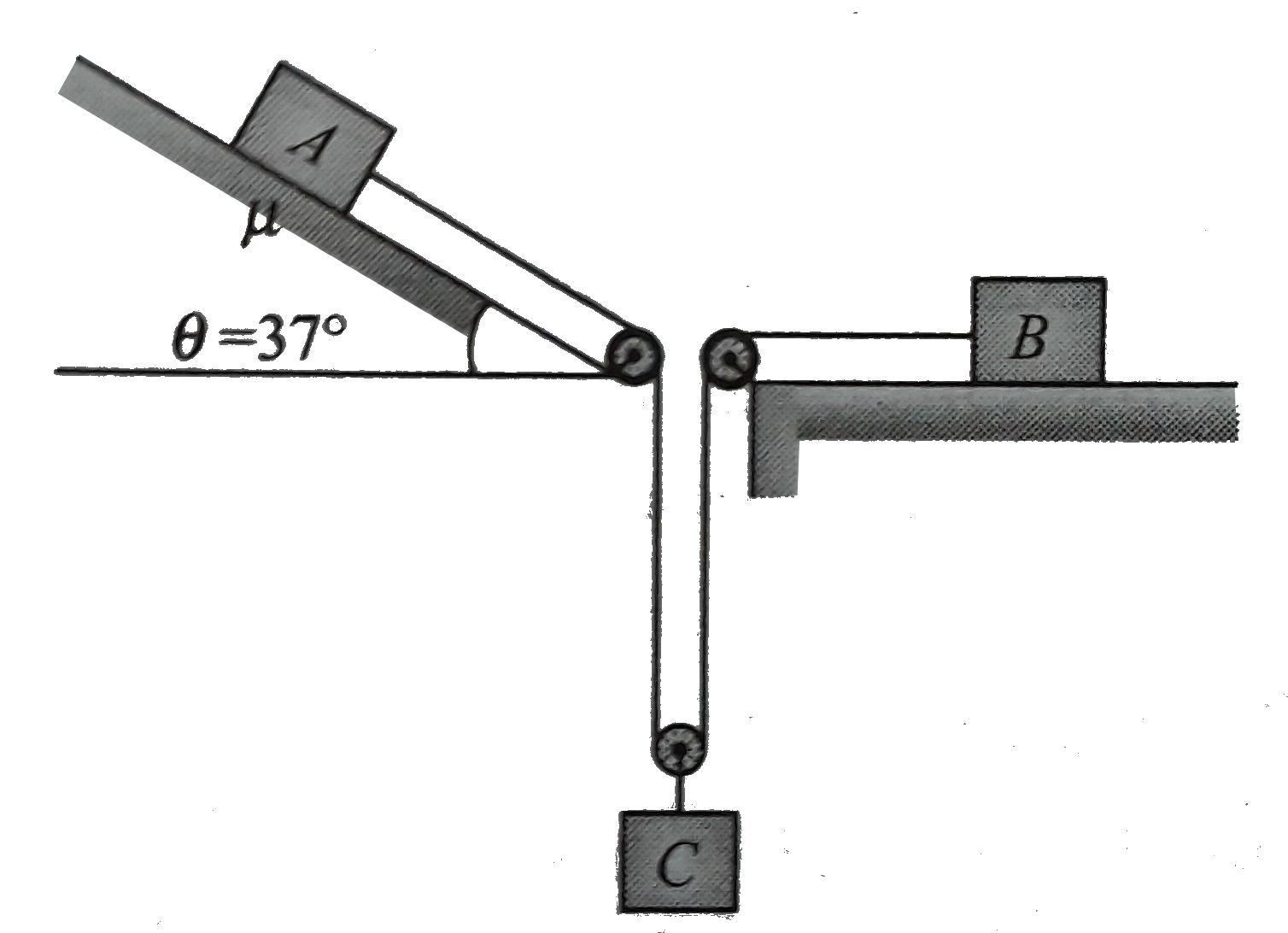 View Solution
View Solution

